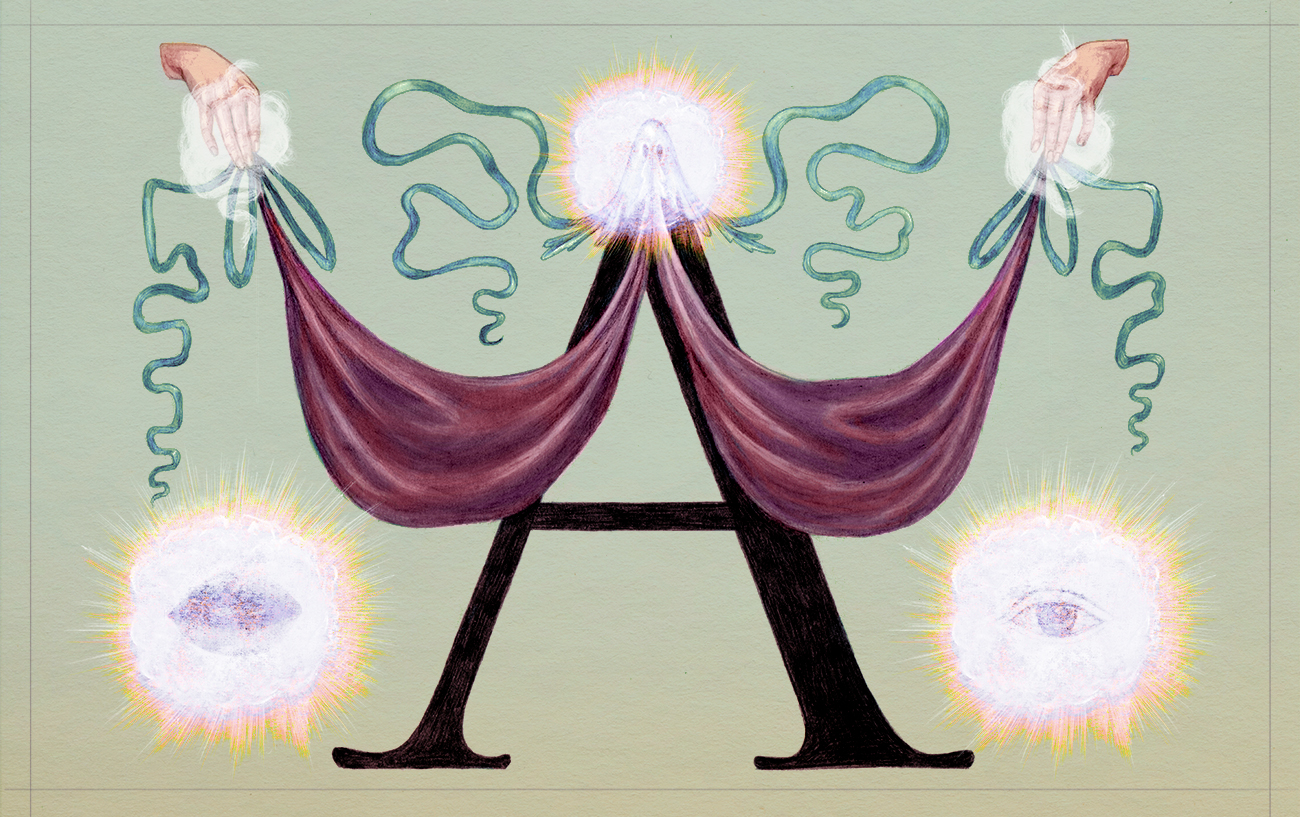
Agatha Christie on the Supernatural
By Erika Ruonakoski | Image Pauliina Mäkelä
Curses, witchcraft and characters fascinated by spiritism play an essential part in many stories by Agatha Christie. Usually, however, she provides a natural explanation for allegedly supernatural phenomena. Her stories reveal a humorous and warm attitude towards people’s desire to believe in something that transcends everyday reality. In our time, there appears to be no room for this kind of attitude: either you are on the side of reason or against it…
The text contains spoilers from Agatha Christie’s Dumb Witness.
“Now I’m convinced, Mr Poirot, that unknown to herself Miss Arundell was a medium”, says the companion of a recently deceased woman in Dumb Witness (1937). According to the companion, Arundell had started to emit ectoplasm – matter in which spiritual entities can find form – in a séance: “On that evening I distinctly saw a luminous ribbon issuing from dear Miss Arundell’s mouth! Then her head became enveloped in a luminous mist.”
For the amateur spiritists Julia and Isabel Tripp the same event predicts death: “[There was] a luminous haze gradually surrounding Miss Arundell’s head – an aureole of faint light. It was a sign – we know that now – a sign that she was about to pass over to the other side.”
In Christie’s stories, spiritists typically create a universe of their own that is hard to challenge from the outside. They acknowledge the doubts entertained by others, but their need to believe in the possibility to receive messages from beyond the grave is too strong for them to view their séances critically.
Our world of randomness, where most of things are in view but hard to understand, may appear grey and meaningless; it fails to engage our imagination. It is hard work to make sense of the complicated interrelationships within it, and so it is no wonder that some are more drawn to an idea of a world where we can find some kind of a plot, hidden goals and a battle of good and evil. Just as we animate natural phenomena and see human figures in the knots in wood or slices of toast, we may be tuned to perceive both human and supernatural intentions where there are none. The world appears as a playground of invisible forces.
Through characters with a rationalist world view, Christie casts a critical eye over the mindscape of spiritists and those who are terrified by the prospect of being cursed. Interestingly though, she tends to depict her overly rationalistic characters as tedious and arrogant. This ambivalence leads us to ask how she wants us to view the spirit world. Are the spirits channelled by a medium real or not? Is the wickedness of human beings an even more dreadful force than the supernatural? Apart from a few horror stories and works of fantasy, in Christie’s narratives the balance tends to tilt in favour of rationality: phenomena that seemed supernatural receive a natural explanation, which in turn helps to solve the murder mystery. Miss Arundell does not secrete ectoplasm – she is suffering from phosphorus poisoning. It is the phosphorus that makes her head glow.
‘‘Conspiracy theories, vaccine refusal or denial of historical facts ultimately question the legacy of the Enlightenment: self-critical use of reason and trust in the significance of science.’’
The battle between the scientific and non-scientific world views is hardly new. Today, however, it seems almost impossible to view the camps forming on each side with the warm humour that was typical of Christie. The stakes are high. Conspiracy theories, vaccine refusal or denial of historical facts ultimately question the legacy of the Enlightenment: self-critical use of reason and trust in the significance of science. Through conspiracy theories and vaccine refusal, new spiritualists become a part of post-truth movements in a wider sense. For this reason, it is difficult to see astrology, predicting the future with tarot cards, and belief in angels merely as empowering forms of belief and therapy that have nothing to do with politics.
Where are reason and freedom ultimately located? Perhaps they cannot be possessed, but only practised. The ectoplasm issuing from the medium’s mouth is made of gauze and photographs, but in many other cases, it is more difficult to see how things stand. All the same, beliefs have an ethical dimension, for it is by sharing some kind of epistemic foundation that we become a community. Is this foundational structure now about to fall apart, or was it always a mere fantasy? What could bring us together again?
Literature
Christie, Agatha. 1937. Dumb Witness. London: Collins.
Hyvönen, Ari-Elmeri and Niko Pyrhönen. 2023. Salaliittoteorioiden politiikat: yhteiskuntatieteellisiä näkökulmia. Tampere: Vastapaino.
Peters, Michael A. 2022. “New Age Spiritualism, Mysticism, and Far-Right Conspiracy”. Educational Philosophy and Theory 55, https://doi.org/10.1080/00131857.2022.2061948.


Leave a Reply